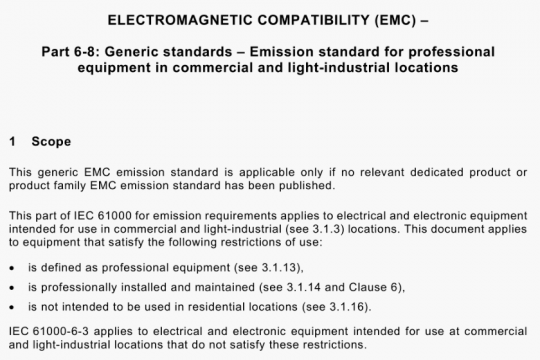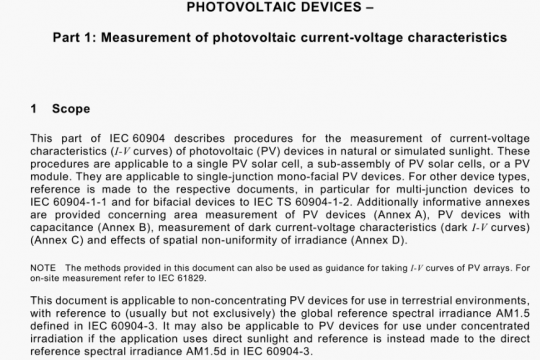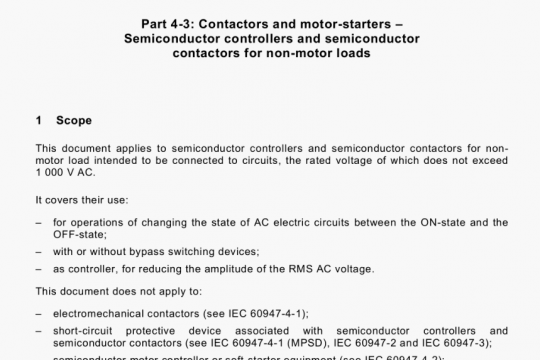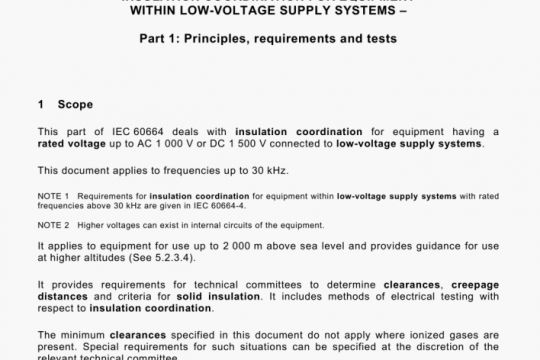IEC 61000-4-18-2019 pdf free
IEC 61000-4-18-2019 pdf free.Electromagnetic compatibility (EMC) – Part 4-18: Testing and measurement techniques – Damped oscillatory wave immunity test.
The following documents are referred to in the text in such a way that some or all of their content constitutes requirements of this document. For dated references, only the edition cited applies. For undated references, the latest edition of the referenced document (including any amendments) applies.
lEG 60050-161, International Electrotechnical Vocabulary (1EV) — Part 161: Electromagnetic compatibility (available at www.electropedia.org)
3 Terms, definitions and abbreviated terms
3.1 Terms and definitions
For the purposes of this document, the terms and definitions given in IC 60050-161 and the following apply.
ISO and IEC maintain terminological databases for use in standardization at the following addresses:
• IEC Electropedia: available at http://www.electropedia.org/
• ISO Online browsing platform: available at http:I/www.iso.org/obp
4.2 Slow damped oscillatory wave phenomenon
This phenomenon is representative of the switching of disconnectors in HV/MV open-air substations, and is particularly related to the switching of HV busbars.
In substations, the opening and closing operations of HV disconnectors give rise to sharp front-wave transients, with rise times of the order of some tens of nanoseconds.
The voltage front-wave includes reflections due to the mismatch of the characteristic impedance of HV circuits involved. In this respect, the resulting transient voltage and current in HV busbars are characterized by a fundamental oscillation frequency that depends on the length of the circuit and on the propagation time.
The oscillation frequency ranges from about 100 kHz to a few megahertz for open-air substations, depending on the influence of the parameters mentioned above and the length of the busbars, which can vary from some tens of metres to hundreds of metres (400 m can occur).
In this respect, the oscillation frequency of 1 MHz can be considered representative of most situations, but 100 kHz has been considered appropriate for large HV substations.
The repetition frequency is variable between a few hertz and a few kilohertz depending on the distance between the switching contacts. For contacts in close proximity, the repetition frequency is at its maximum, while for contact distances close to allowing re-ignitions between the contacts, the repetition rate is at its minimum and is equivalent to twice the power frequency with respect to each phase (lOOIs per phase for 50 Hz grids and 120/s per phase for 60 Hz grids).
The repetition rates of 40/s and 400/s represent a compromise, taking into account the different durations of the phenomena, different frequencies considered and the energy to which the circuits under test are subjected.
Repetitive oscillatory transients can be generated by switching transients and the injection of impulsive currents in power systems (networks and electrical equipment).IEC 61000-4-18 pdf free download.




